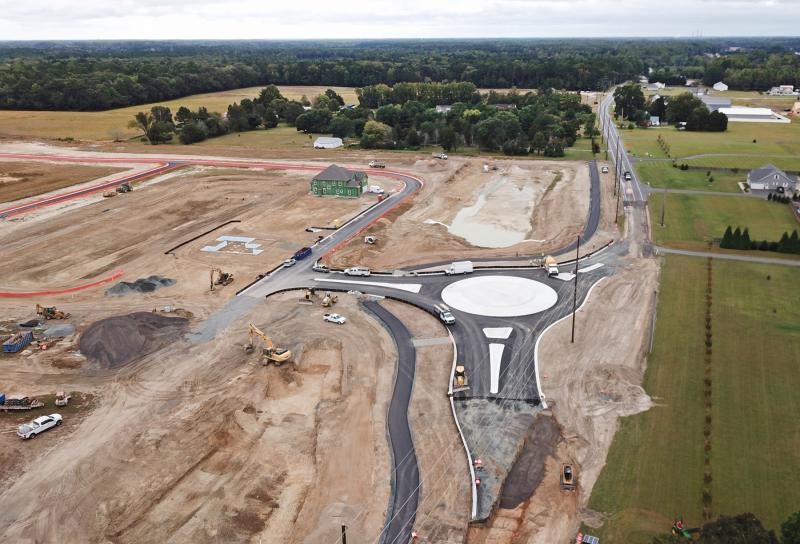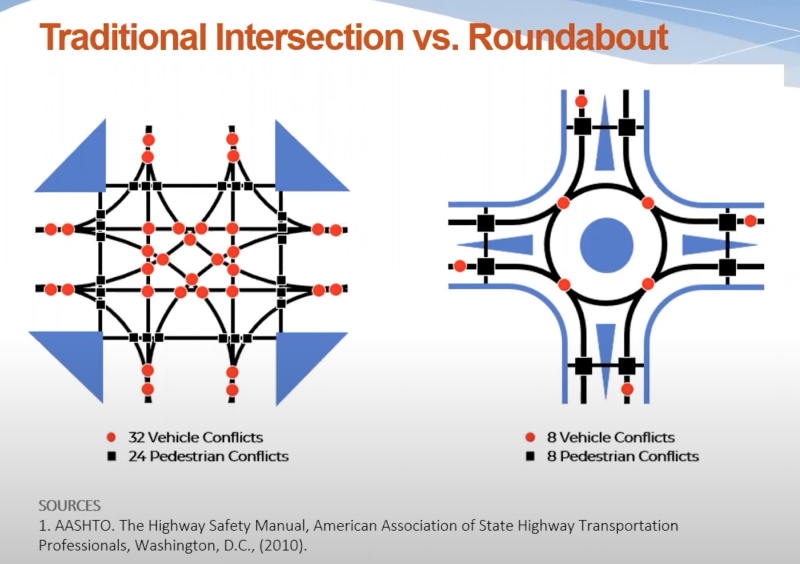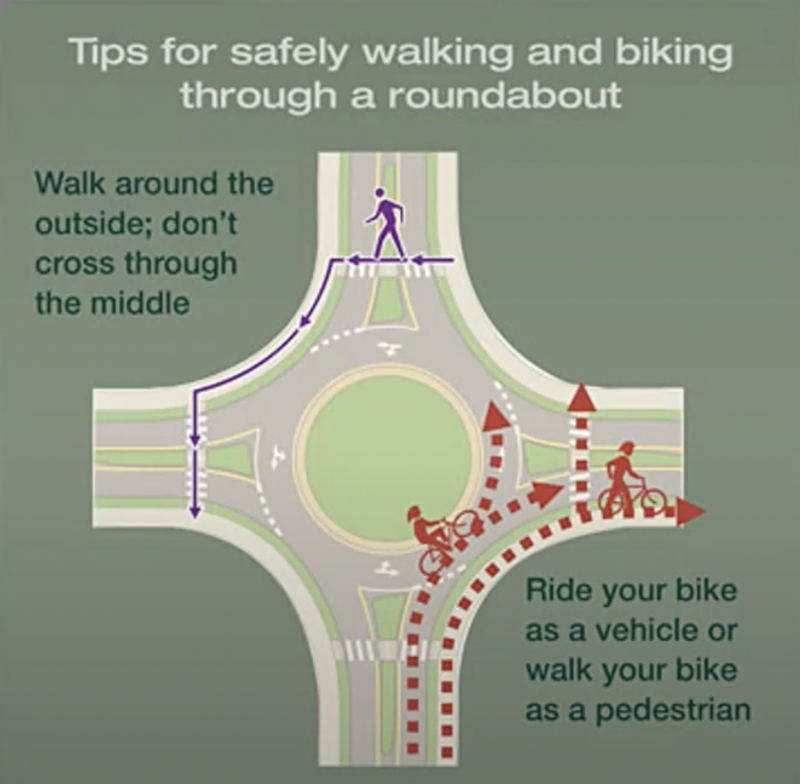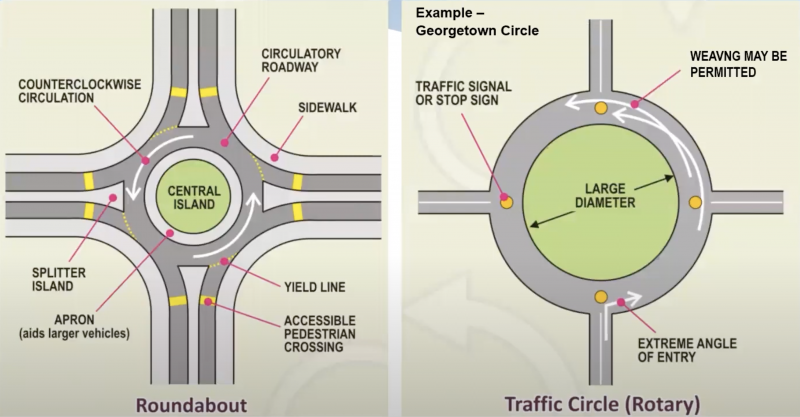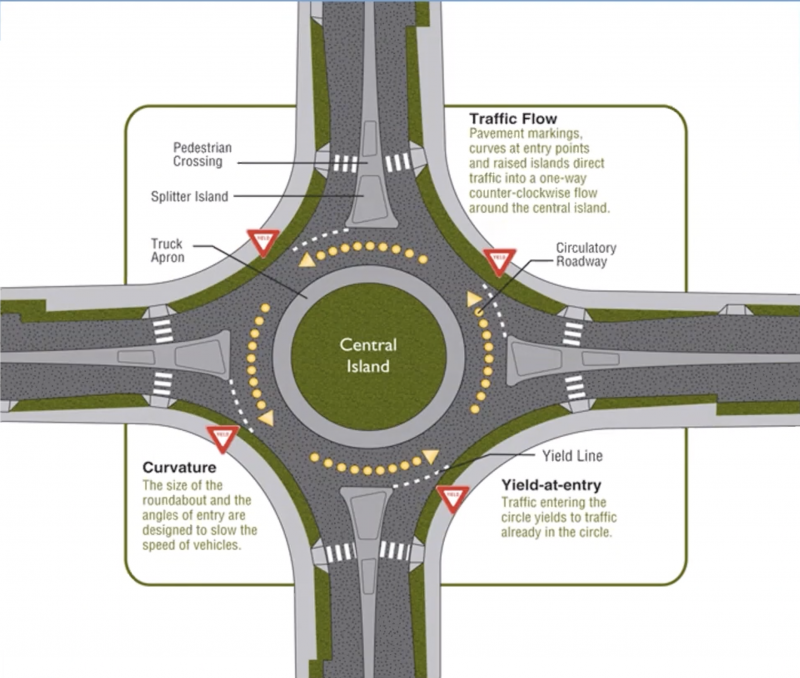Roundabouts are the preferred intersection improvement for traffic engineers throughout the country because they reduce vehicle conflicts and slow down cars, which together improve overall safety.
With five roundabouts recently installed and another 14 planned just in the Cape Region, it’s safe to say Delaware Department of Transportation officials agree.
“They have pretty significant safety benefits,” said Leah Kacanda, a planner for DelDOT consultant Whitman, Requardt and Associates, speaking to the Five Points Working Group earlier this year. “There’s pretty clear documented evidence from across the country collected by [the Federal Highway Administration] about why these intersections are safer.”
According to FHWA, when a roadway is converted from a two-way, stop-controlled intersection to a roundabout, the intersection will see an 82 percent reduction in fatal and injury crashes. For signalized intersections, fatal and injury crashes are reduced by 78 percent.
One major reason for these drastic reductions is the number of conflicts within the intersection. In a traditional intersection, a vehicle may turn left, go straight or turn right. That results in 32 conflict points with other vehicles and 24 conflict points with pedestrians. In a roundabout, where vehicles may only travel in a counterclockwise direction, the conflict points are reduced to eight for both vehicles and pedestrians.
“The shape of the roundabout and radius really slows people down, another reason why crashes are much less severe,” Kacanda said.
Unlike The Circle in Georgetown, newer roundabouts are designed with a tighter radius, keeping vehicle speeds down while also providing bicyclists and pedestrians with a safe path across roads. Most, if not all, roundabouts are designed with a splitter island in the approaching travel lanes, where bicyclists and pedestrians can safely cross to the center of the roadway before continuing all the way to the other side of the road.
While bicyclists are permitted to ride within a roundabout, many of the new roundabouts include wider shared-use paths as an option.
Although roundabouts are the preferred option, they are not always chosen. Todd Oliver, a WRA planner, said roundabouts are used on a case-by-case basis based on current traffic volumes and flows as well as available right of way, environmental impact, and drainage and utility impacts.
“The roundabouts are analyzed in accordance with the existing and projected traffic volumes for that particular location or condition to ensure circulation will continue without the queuing you may experience now,” he said.
To learn more about roundabouts, go to safety.fhwa.dot.gov/intersection/roundabouts or deldot.gov/Programs/roundabouts.
Planned roundabouts
• Kings Highway and Dartmouth Drive
• Kings Hwy. and Clay Road
• Kings Hwy. and Gills Neck Road
• Kings Hwy. at senior living facility
• Kings and Freeman highways
• Wescoats Road at Marsh Road
• Cave Neck Road/Hudson Road/Sweetbriar Road intersection
• Beaver Dam Road/Plantation Road near Five Points
• Minos Conaway Road just west of Route 1
• Janice Road at New Road near Lewes Senior Center
• Nassau Road at New Road
• East of Route 1 at Cave Neck Road (new road)
• West of Route 1 at Cave Neck Road (new road)
• Cave Neck Road west of Route 1 near Paynter’s Mill
Recently installed roundabouts
• New Road at Tower Hill development
• Warrington Road at new Beebe Specialty Surgical Hospital south of Route 24
• Beaver Dam Road at Anchors Run development
• Sand Hill Road just north of Route 9
• Zoar Road/Speedway Road/Bethesda Road
How to use a roundabout
• Upon approaching a roundabout, stay to the right of the island and slow down
• Watch for pedestrians and bicyclists
• Yield to traffic already in the roundabout
• Once in the roundabout, do not stop except to avoid a collision
• Always keep to the right of the central island and travel in a counterclockwise direction
• Maintain a slow speed and do not pass other vehicles
• Follow the roundabout until your exit.











